'Nothing short of spectacular': ESA's Biomass satellite releases 1st views of Earth from orbit (photos)
New images from ESA's Biomass satellite reveal forests, volcanoes, deserts and glaciers in striking detail, hinting at what's still to come.

VIENNA, AUSTRIA — An exclamation of awe, excitement and cheers erupted today at ESA's Living Planet Symposium as a striking new window into Earth's forests, deserts and glaciers opened with the release of the first images from ESA's Biomass satellite.
Unveiled at the Living Planet Symposium 2025 in Vienna, the images mark a major milestone in our understanding of how Earth stores carbon — and how climate change is transforming ecosystems.
Just two months after launch, ESA's Biomass mission is already delivering on its promise, offering a glimpse into the potential of its novel radar system. Although the mission is still in its commissioning phase, the early images are already showing the satellite's capabilities.
"These first images are nothing short of spectacular — and they're only a mere glimpse of what is still to come," said Michael Fehringer, ESA's Biomass Project Manager, in a statement. "As is routine, we're still in the commissioning phase, fine-tuning the satellite to ensure it delivers the highest quality data for scientists to accurately determine how much carbon is stored in the world's forests."
ESA leaders are already praising the efforts of the many scientists behind the program. "It was extremely emotional because it was the work of hundreds of people," Simonetta Cheli, Simonetta Cheli, ESA's Director of Earth Observation Programmes, told Space.com in an interview. "It's very symbolic of the effort behind the scenes and the potential that this mission has."

Biomass first images
Bolivia — Tropical forests and the Beni River

This first image captures a vibrant region of Bolivia where rainforest meets riverine floodplains. Bolivia has suffered significant deforestation, primarily due to agricultural expansion. In the image, different colors highlight distinct ecosystems: green for rainforest, red for forested wetlands and floodplains, and blue-purple for grasslands. The dark snaking line of the Beni River — free-flowing and undammed — cuts through the landscape.
"It shows the beauty of our Earth and what we can do to protect it," said Cheli in a press conference following the Biomass image release at the Living Planet Symposium, Vienna.
Breaking space news, the latest updates on rocket launches, skywatching events and more!
Bolivia — Biomass vs Sentinel-2 comparison
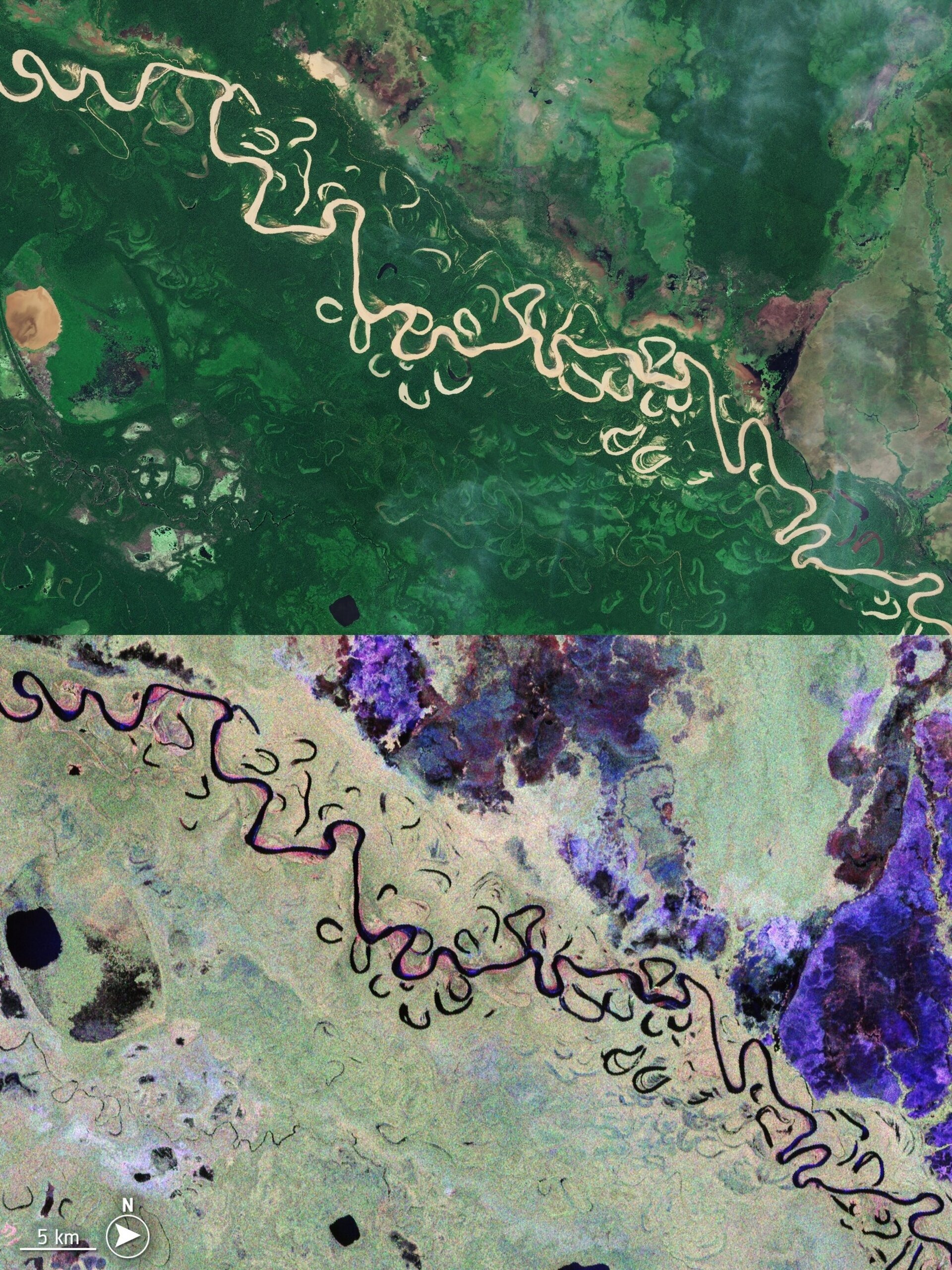
In this paired image, the same Bolivian landscape is shown as seen by Biomass and by Copernicus Sentinel-2. Though they may appear visually similar, only Biomass, with its penetrating P-band radar, captures the full vertical forest structure beneath the canopy. This makes it far more effective at measuring forest biomass and carbon content. While Sentinel-2 is limited to surface features, Biomass unlocks a 3D view of forests vital for accurate carbon accounting.
Brazil — Northern Amazon Rainforest
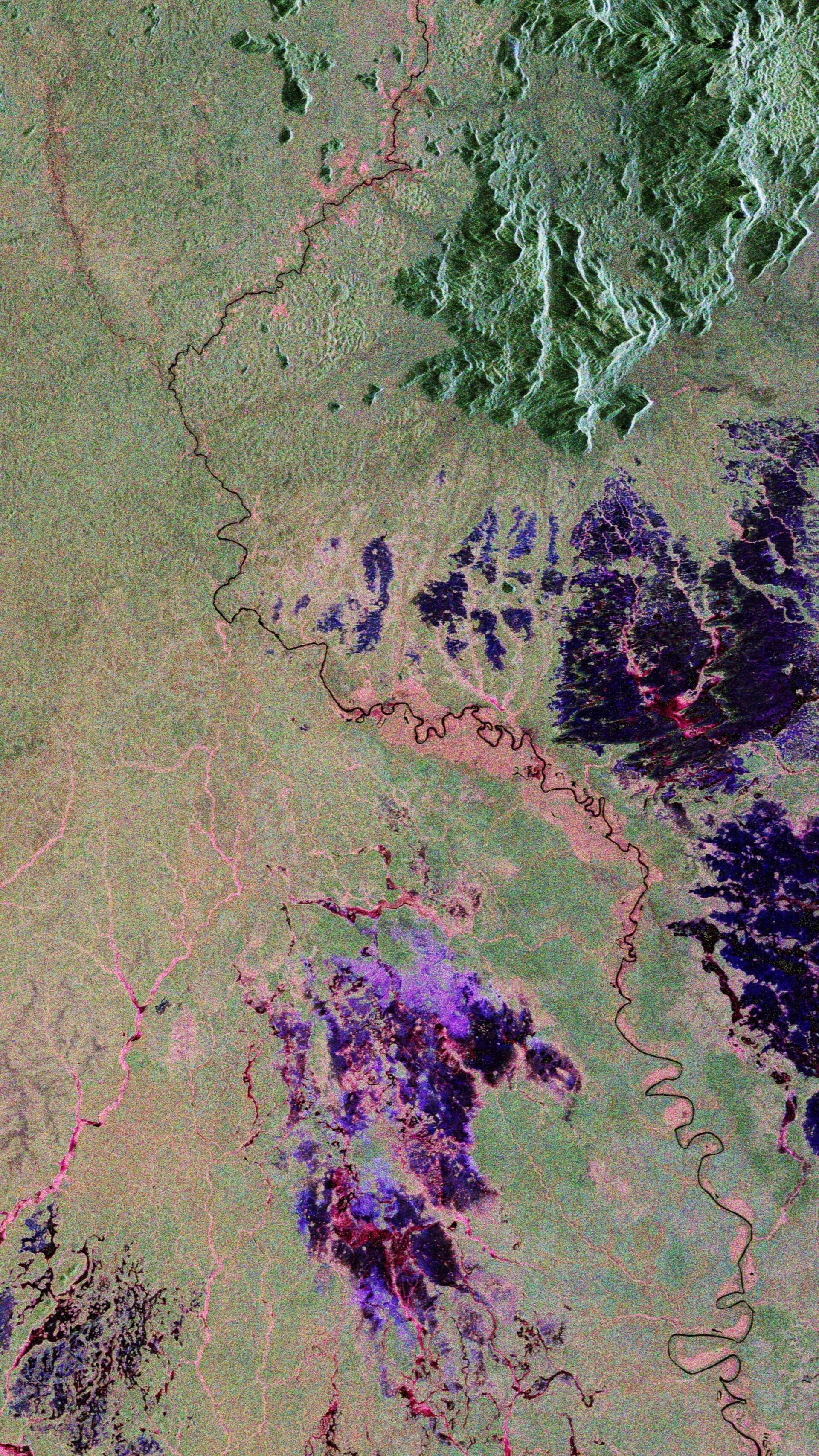
This striking view over northern Brazil was the first image returned by Biomass. The satellite's radar reveals subtle terrain and vegetation differences across the Amazon rainforest. Red and pink tones indicate forested wetlands and floodplains, especially along rivers, while the green regions depict dense forest and more rugged topography in the north. The image hints at Biomass' potential to monitor forest health and structure across remote, ecologically critical areas of the Amazon Basin.
Indonesia — Halmahera's volcanic rainforests
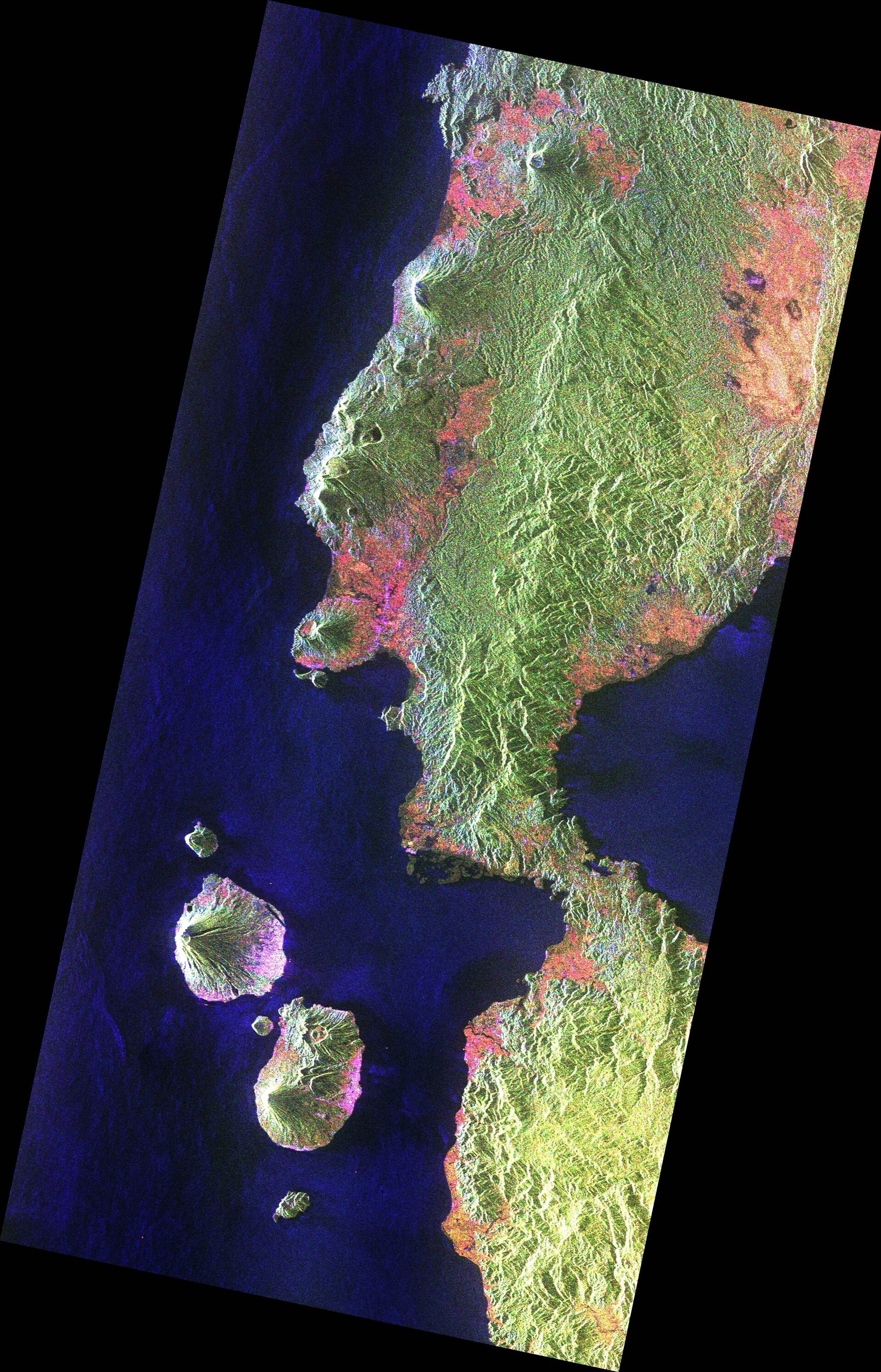
This image features the mountainous Halmahera rainforest in Indonesia, revealing complex topography shaped by volcanic forces. Mount Gamkonora, still active, is visible near the northern coast. Despite dense vegetation, Biomass' radar can penetrate the canopy to expose the contours of volcanoes and the surrounding forest floor. It's a striking example of the satellite's power to map both biomass and terrain, crucial for understanding the landscape dynamics of tectonically and volcanically active regions.
Gabon — Forests and the Ivindo River
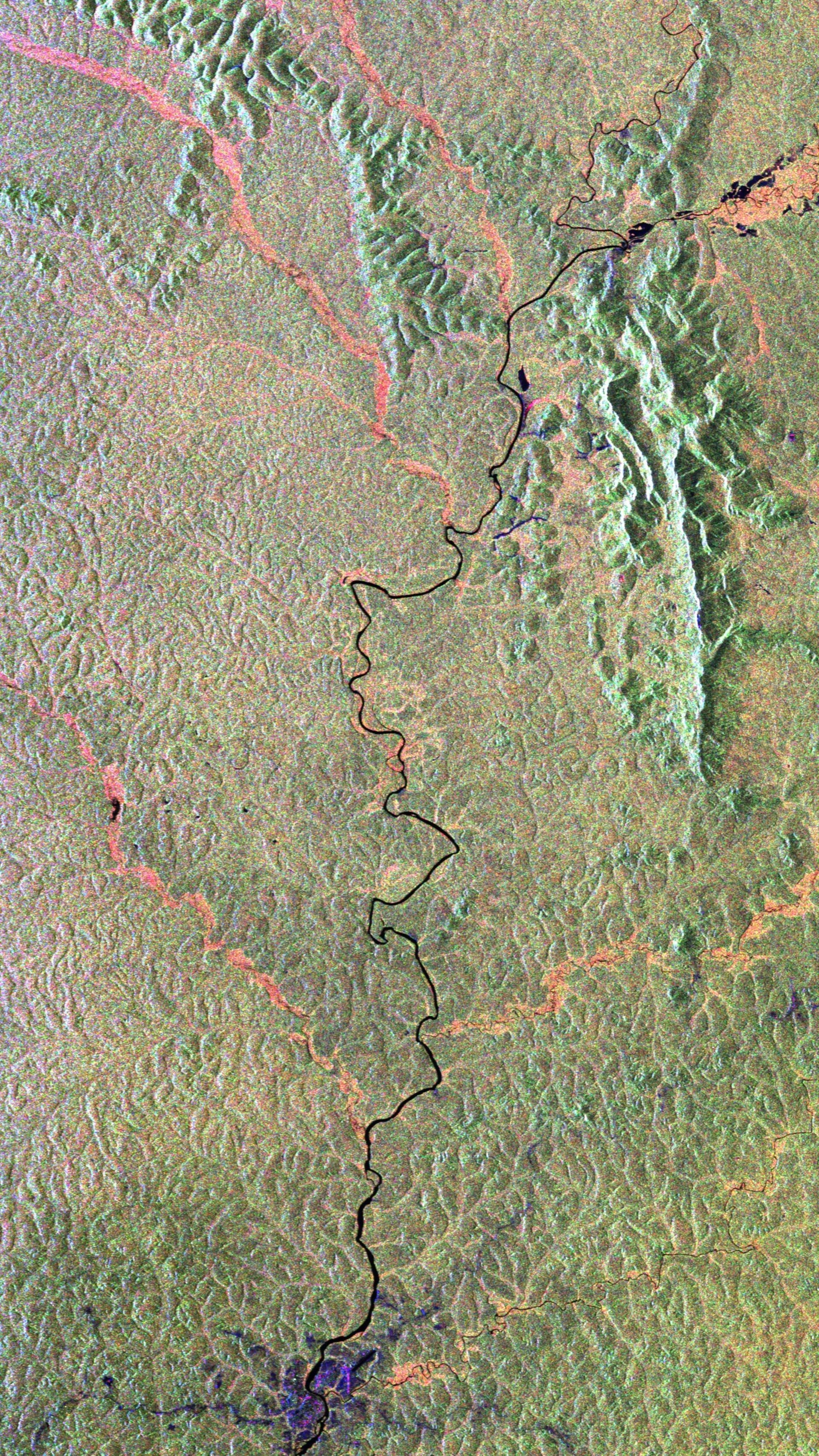
In this image, Biomass peers into the heart of Africa's Congo Basin, capturing Gabon's dense forests and the winding Ivindo River, an ecological lifeline. The river and its tributaries appear clearly against a rich green background representing unbroken rainforest.
Chad — Sahara Desert structure
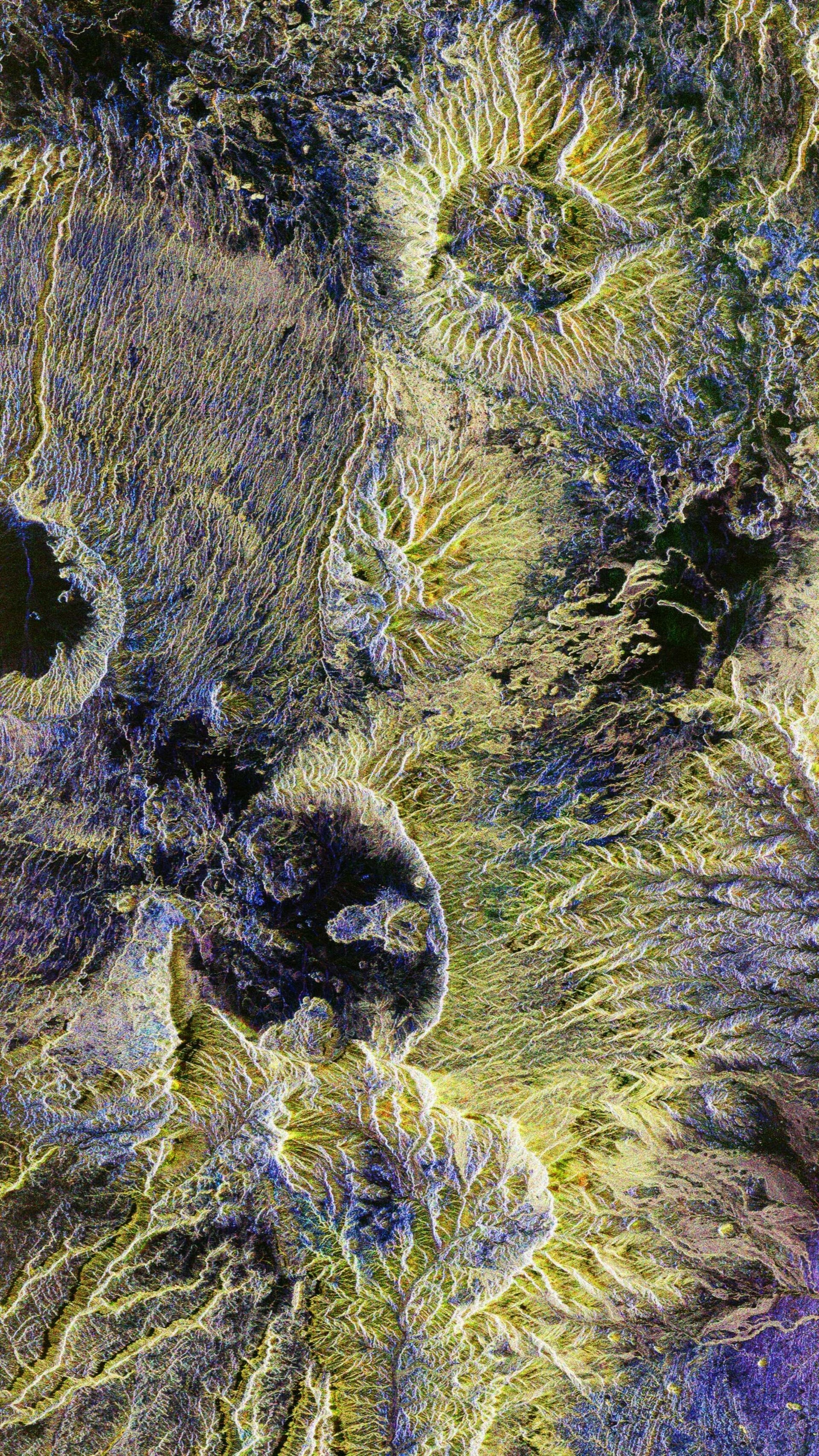
Here, Biomass reveals hidden structures beneath the sands of the Sahara in northern Chad, including parts of the Tibesti Mountains. Its P-band radar can penetrate up to five meters below the desert surface, exposing the shapes of ancient riverbeds and geologic formations long buried beneath arid terrain. This capability opens new frontiers in paleoclimate research and groundwater mapping, especially in extreme environments once considered too opaque for remote sensing.
Antarctica — Nimrod Glacier and Transantarctic Mountains
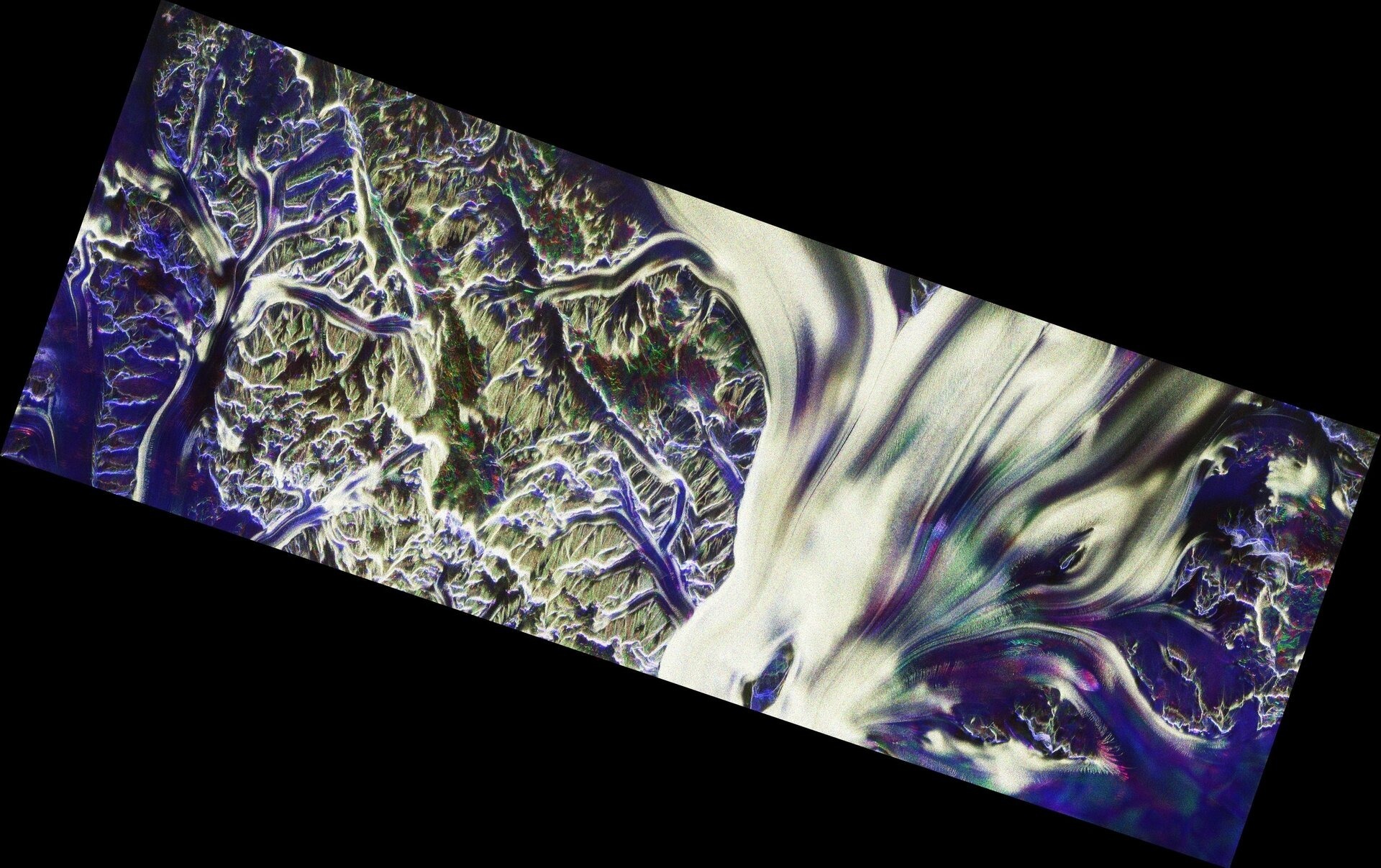
The final image showcases the frozen landscape of Antarctica, where the Nimrod Glacier flows into the Ross Ice Shelf alongside the Transantarctic Mountains. Biomass' radar can see into the ice, hinting at its ability to track internal ice structures and flow velocities. Unlike shorter-wavelength radar missions, Biomass may unlock key data about ice sheet dynamics and stability, critical for understanding future sea-level rise in a warming world.
While these early results aren't yet calibrated for scientific analysis, they confirm that Biomass is on track to meet — and possibly exceed — its ambitious goals.
With a mission designed to span five years, Biomass will provide consistent, global coverage of Earth's forested regions, contributing vital data for climate models, conservation efforts, and carbon accounting. As the satellite transitions into full operational mode, scientists are eagerly anticipating the datasets that could transform how we monitor — and protect — the living lungs of our planet.
Join our Space Forums to keep talking space on the latest missions, night sky and more! And if you have a news tip, correction or comment, let us know at: community@space.com.
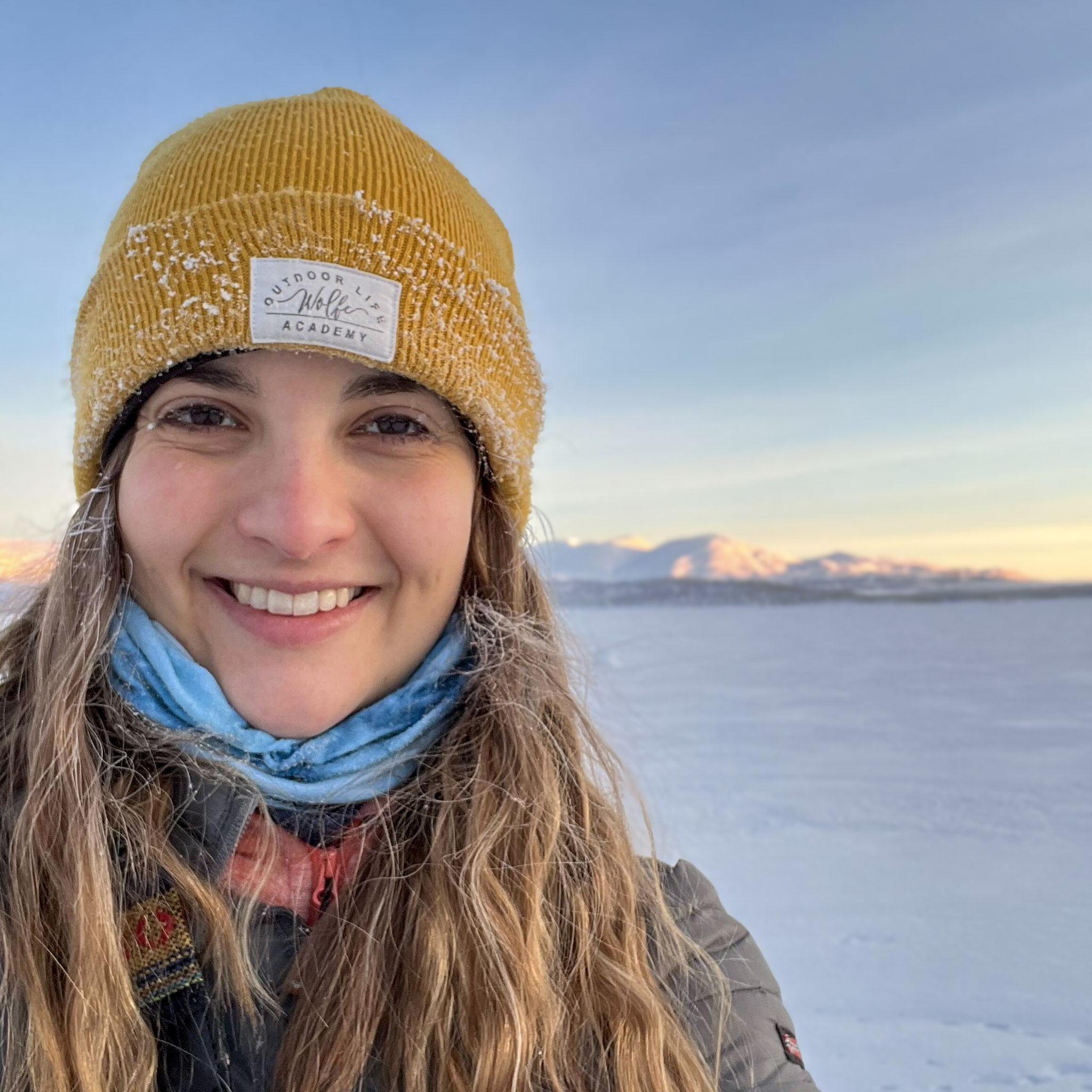
Daisy Dobrijevic joined Space.com in February 2022 having previously worked for our sister publication All About Space magazine as a staff writer. Before joining us, Daisy completed an editorial internship with the BBC Sky at Night Magazine and worked at the National Space Centre in Leicester, U.K., where she enjoyed communicating space science to the public. In 2021, Daisy completed a PhD in plant physiology and also holds a Master's in Environmental Science, she is currently based in Nottingham, U.K. Daisy is passionate about all things space, with a penchant for solar activity and space weather. She has a strong interest in astrotourism and loves nothing more than a good northern lights chase!
You must confirm your public display name before commenting
Please logout and then login again, you will then be prompted to enter your display name.
